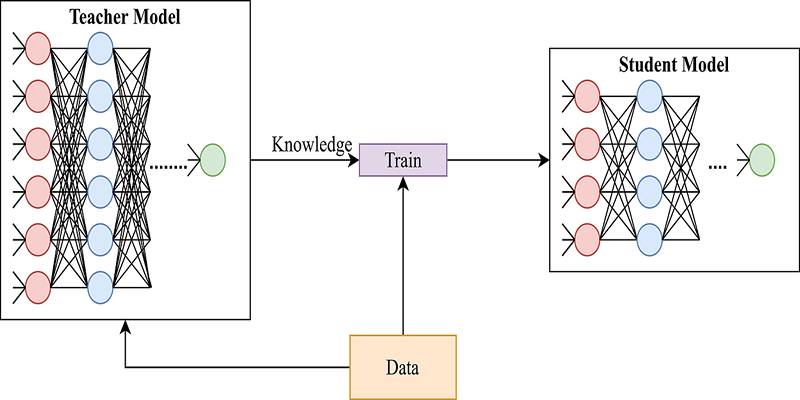Language models have become powerful digital assistants in today’s fast-moving tech world. In 2025, artificial intelligence is helping people code faster, find accurate information online, and perform research tasks more efficiently. Large Language Models (LLMs) are being used by developers, researchers, and professionals across industries to save time and improve productivity.
This post presents the top 6 state-of-the-art (SOTA) language models that stand out for their exceptional performance in coding, web search, and research. These models have unique strengths and are shaping the future of how people interact with digital content.
1. GPT-4 Turbo by OpenAI
GPT-4 Turbo is a highly capable model released by OpenAI. It powers ChatGPT and is known for being fast, detailed, and accurate in various tasks. Its versatility makes it suitable for developers, researchers, and general users.
One of its most notable features is its ability to handle long conversations and documents using a 128K context window. It allows users to work with large files, detailed articles, and complex code without losing track.
Key strengths of GPT-4 Turbo:
- Understands and writes code in multiple languages like Python, JavaScript, and more
- Great at summarizing long research papers
- Fast and context-aware with long memory
Common use cases:
- Generating and debugging code
- Creating reports or summaries for research
- Acting as a virtual assistant for planning or brainstorming
GPT-4 Turbo is available through ChatGPT Pro, making it accessible to a wide range of users, from hobbyists to enterprise teams.
2. Claude 3 by Anthropic
Claude 3 is another strong model that focuses on clarity, safety, and reasoning. Built by Anthropic, this AI is especially useful for reading long documents, understanding complex topics, and giving thoughtful responses. It has quickly gained popularity among researchers and educators.
Claude 3’s ability to process very long texts, such as full research papers or books, makes it a top choice for deep research and academic writing. It also performs well in logical reasoning, making it a reliable tool for scientific and technical analysis.
What sets Claude 3 apart:
- Handles long and complex content with ease
- Safe and structured responses
- Strong performance in logical thinking and research
Ideal for:
- Academic writing and research
- Explaining scientific concepts step-by-step
- Creating educational content
Between safety and depth, Claude 3 is well-suited for professionals who need trustworthy and thoughtful AI assistance.
3. Gemini 1.5 by Google DeepMind

Gemini 1.5, previously known as Bard, is Google DeepMind’s powerful LLM that blends strong reasoning with internet-connected features. It works well for people who want smart web search abilities and tight integration with Google’s services.
Gemini is a multi-modal model, which means it can work with not just text but also images, audio, and code. It opens the door to new applications where users need to analyze different types of content together.
Top features of Gemini 1.5:
- Connects with Google Search to offer live data
- Strong at analyzing web pages and online resources
- Multi-modal abilities for creative and technical tasks
Useful for:
- Real-time web research
- Reading and summarizing documents stored in Google Drive
- Writing and testing code
Gemini 1.5 is ideal for users who want an AI assistant that blends AI reasoning with web search and productivity tools.
4. Mistral Models (Mixtral, Mistral-7B)
Mistral has released a range of open-weight models, such as Mixtral and Mistral-7B. These models may not have the same fame as GPT-4, but they are highly efficient and ideal for users who want control over their AI systems.
These models are lightweight, fast, and open-source, making them ideal for deployment in custom environments. Developers and companies can modify these models to suit their needs, whether it's for coding, chatbot development, or internal tools.
Why Mistral models are gaining traction:
- Open-source and customizable
- Lightweight and fast, suitable for smaller systems
- Surprisingly strong performance in code generation
Best suited for:
- Developers building custom AI apps
- Coding assistants or debugging tools
- Local AI systems with limited resources
Mistral’s Mixtral model uses a Mixture-of-Experts architecture, which improves performance while keeping the model efficient. It makes it one of the best open-source models available today.
5. Command R+ by Cohere
Command R+ is designed for retrieval-augmented generation (RAG), which means it can answer questions by pulling from real documents and databases. It makes it ideal for knowledge workers, researchers, and enterprise applications. What makes Command R+ special is its ability to use outside sources to provide grounded answers. It doesn’t just guess based on patterns—it searches and references real documents before replying.
Main features of Command R+:
- Built for RAG tasks and document-heavy questions
- Accurate answers with source-based grounding
- Optimized for business and research needs
Applications include:
- Enterprise search tools
- Research assistants
- AI-driven data analysis
Command R+ is a go-to model for businesses or researchers who work with large volumes of information and need precision and traceability in responses.
6. LLaMA 3 (Expected Release by Meta)

LLaMA 3 is Meta’s upcoming addition to its popular LLaMA series. While it has not been officially released yet, early reports suggest it will offer improved logic, better code handling, and open-source access. Like its predecessors, LLaMA 3 is expected to be developer-friendly, making it useful for both personal projects and large-scale applications.
Why LLaMA 3 is highly anticipated:
- Likely to be open-source and customizable
- Built for reasoning and coding tasks
- Expected to challenge existing top-tier models
Potential use cases:
- AI apps with specific requirements
- Educational tools and learning platforms
- Custom coding assistants
Once released, LLaMA 3 is expected to attract a large community of developers looking to build AI tools that they can fully control and modify.
Conclusion
AI language models will play a major role in transforming how professionals code, search for information, and conduct research. Each of the top models offers unique strengths tailored to different tasks and user needs. GPT-4 Turbo and Claude 3 stand out for their deep reasoning, accuracy, and support for long-form content. Gemini 1.5 excels with its integration into the Google ecosystem and real-time web search capabilities. For developers seeking open-source flexibility, Mistral and the upcoming LLaMA 3 provide powerful, customizable solutions.











